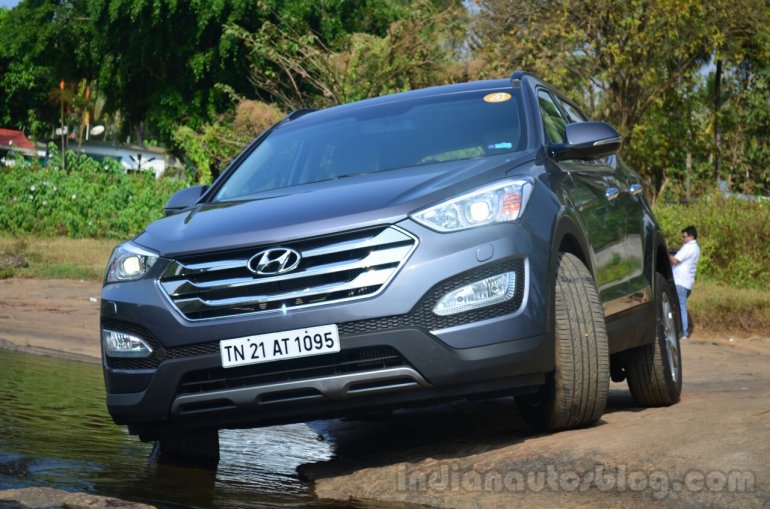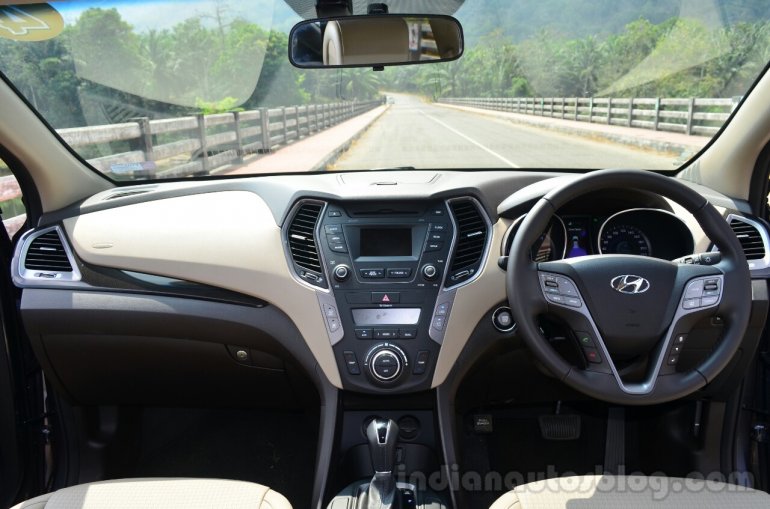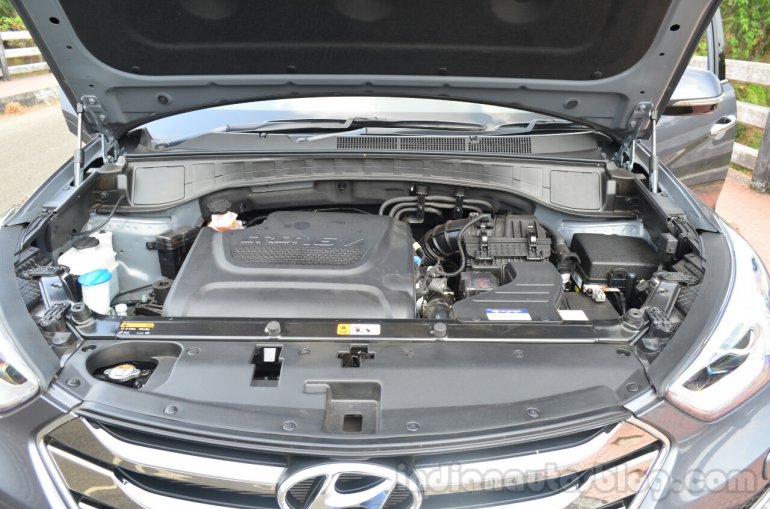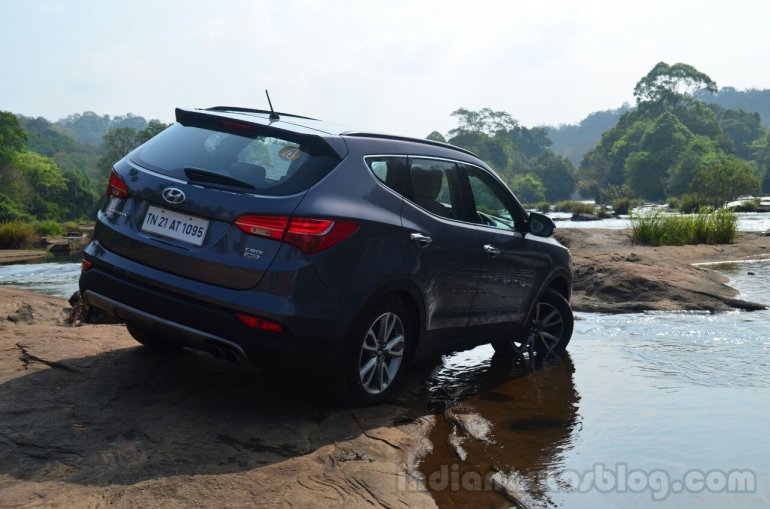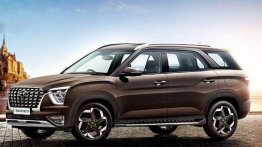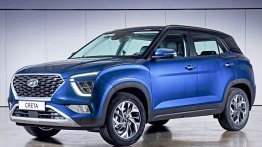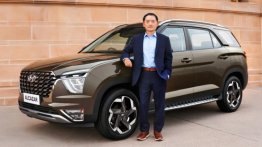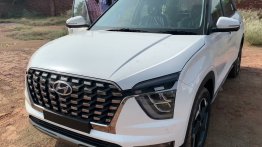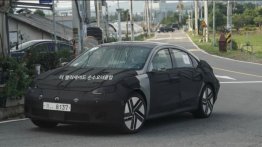The new Hyundai Santa Fe is a very important car for the Korean brand in India, and we say that for a reason.
You see, until now, all of Hyundai’s launches in India have been mass-market products, benchmarked to rival entry- and mid-level cars from Maruti, Honda and the likes. Outside India, Hyundai makes a whole load of international products developed for international tastes and our European and American counterparts inform us that the quality of these cars are on par with their German alternatives.
Driving the new Santa Fe for us is in part, assessing what Hyundai offers its international customers. More than reviewing the car and telling you what its like, we answer another important question: Is the new Santa Fe worth the price tag Hyundai is asking for?
An International Success Story:
The Santa Fe you see here was launched in international markets such as the U.S and Europe back in the middle of 2012. The SUV went on to receive positive reviews in these continents and also sells in very good numbers.
Last year, the Euro NCAP released its list of ‘Safest Vehicles’ and in the SUV category, the Santa Fe was rated even higher than the new Range Rover.
Exteriors:
With its Storm Edge design, the Santa Fe certainly looks the part of a modern crossover. It may not have the butch stance of the Fortuner, but the design of the Santa Fe can be described instead as very European. The lines running through the body are neatly cut, the presence of chrome exists and is not overdone, while the rear end looks particularly stylish and modern.
Interiors:
Keep the badge (and the layout) aside and the interiors of the Santa Fe are up there, if not better in certain places, than the Audi Q3 and BMW X1. Each and every part feels solidly well put together.
The center console features a rather tiny touchscreen infotainment system while a dual-zone climate control unit rests below it. A larger display would have done some good though, and is our first recommendation for the mid-cycle model.
Just below the center console, Hyundai seems to have made their rendition of the Volvo Floating Console. It feels beautifully executed and adds a touch of luxury to the SUV. There are more such ‘attention-to-detail’ elements to be found. The instrument cluster for example, sports dials within dials, to display the fuel level and the gear position. The door trims are finished in a nice contrast stitching with a ‘Santa Fe’ logo embossed in metal.
As far as cabin insulation goes, the Santa Fe’s cabin was better insulated from the outside sounds compared to a German rival assembled in India.
Missing elements in the interior include a sunroof, a large infotainment display and an automatic day/night rear view mirror (even the i20 gets it!). Apart from these omissions, the interior of the Santa Fe excels in build quality, though we feel Hyundai could have enhanced the visual flair of the dashboard.
Comfort:
The seats up front feel very comfortable, and with the drivers seat being 12-way electrically adjustable, its easy to find a spot that suits your torso and position. This automatic variant of the Santa Fe has a foot-operated parking brake, which may hinder at times when you want to rest your free foot on the dead clutch.
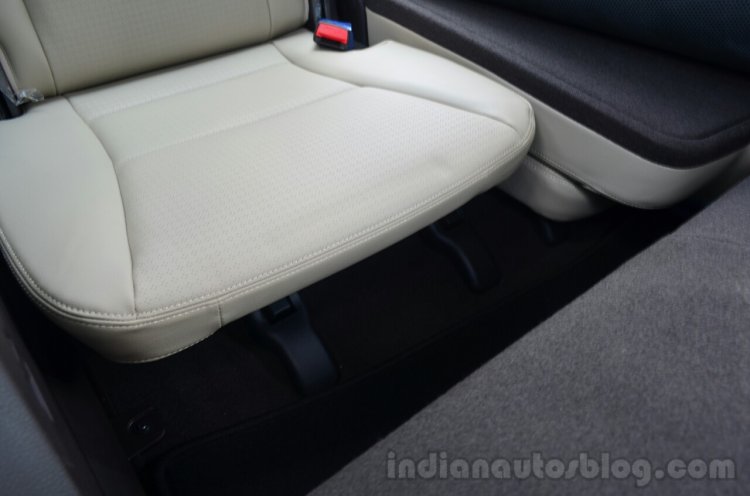
Moving to the second row, the seats are well executed, though they could do with better thigh support. Legroom is decent and should suffice most rear seat owners. The seat back is split in a 40:20:40 ratio and as a result, individual reclining is possible.
The last row seats are better left unused. At max, these are child seats and should be treated that way. Even with all seats in place, we reckon you should be able to stack 2-3 trolley bags in the boot.
Engine and Gearbox:
Power for the Santa Fe comes from a 2.2-liter four-cylinder diesel engine producing 197 PS and 44.5 kgm of torque (42.9 kgm in the manual transmission). While the base variant gets a 6-speed manual, the one we’re driving uses a 6-speed automatic. In its top-end trim seen here, power is sent to all four wheels.
The engine, like other Hyundai diesels, scores very well on refinement. Vibration is non-existent while engine noise is barely audible.
Keeping in mind that this 2.2-liter unit needs to lug the Santa Fe’s 2 tonne weight, acceleration can be described as impressive. Helping the Santa Fe accelerate effortlessly is the 6-speed automatic transmission which offers precise and smooth shifts. Be it in the city or highway, the gearbox does a very good job of transferring the power to the road.
Overall, the performance of the Santa will satisfy its owners. It may not be as light or quick to drive as a Q3 or X1, but compared to the Fortuner, the Santa Fe certainly feels more agile.
Ride and Handling:
Hyundai says the Santa Fe comes with a Flex Steering feature. Basically, a button on the steering wheel alters the way the steering feels and it can be set to comfort, sport or normal. Sounds extremely gimmicky and is prone to fail is what you might be thinking. However, this gimmicky feature actually works in the Santa Fe.
By alternating the potential of the electronic power steering system, the steering is, artificially, made to feel heavier or lighter. Though we use the word ‘artificial’, it does instill confidence in the driver while taking corners. In the Sport mode, the steering offers adequate feedback, while Comfort makes it ideal for city driving.
With the Santa Fe, Hyundai engineers have struck a good balance between ride and handling. Ride quality, even with 18-inch wheels, is surprisingly good and should easily suffice pothole-scathed city roads.
While body roll is obviously present in a 2 tonne family SUV, the Santa Fe’s handling by no means is sloppy, but is quite well controlled.
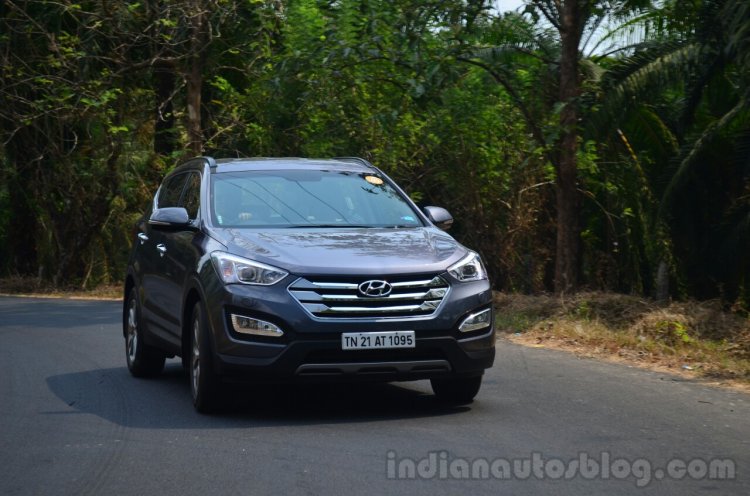
The brakes on the Santa Fe can be described adequate at best. However, the SUV does come with ABS, EBD and dual front airbags as standard.
On the top-end variant, Hyundai will offer front side and curtain airbags (taking the tally of airbags to 6), Advanced Traction Cornering System, ESC, Vehicle Stability Control, Hill start and descend assist.
Off-Road:
We had a chance to mildly go off-road with the Santa Fe. This gave us an opportunity to use the car’s hill descend assist and differential lock. The hill descend control works as its supposed to: you activate the system and once the car exceeds a speed of about 10 km/h, the brakes are automatically applied, provided you don’t have your foot on the accelerator.
The Santa Fe has reasonable wheel articulation and a 185 mm ground clearance. If its off-roading you’re to look at, the Fortuner is the winner given its rugged body-on-frame chassis and better ground clearance. Also, history has proven that the Toyota would prove inexpensive to fix should you have any off-roading misadventures.
Verdict:
The Santa Fe is the best Hyundai in India, no doubt about that. It may not have the rugged, go-anywhere capability of the Fortuner, but in all other departments, its several notches better than the Toyota or other SUVs it competes with.
Had Hyundai priced the Santa Fe on par with the Fortuner, the review could have ended here. However, from INR 25.08-27.89 lakhs (ex-Showroom, New Delhi), the Santa Fe’s price overlaps that of the Audi Q3 and BMW X1. So, is the Hyundai better than these German alternatives?
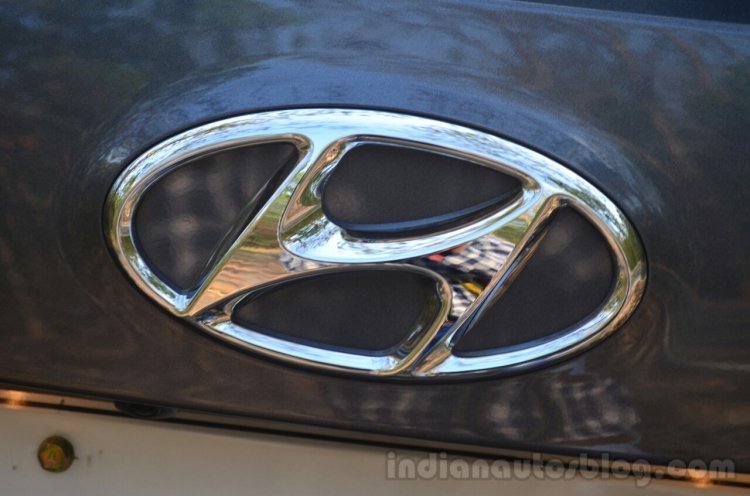
In short, yes. Take away the four-circles from the Q3 and the propeller logo from the X1 and you’re left with two crossovers which can accommodate five passengers, which have lesser/comparable features compared to the Hyundai (on the Q3 S, Audi won’t even give you climate control!) and which don’t offer 4WD (you get this on the Q3 provided you don’t opt for the Q3 S). Yes, the Germans’ cabins look the part of a luxury car, while that of the Santa Fe looks more like an upgraded Elantra, but the build quality feels nearly the same in the Hyundai.
If you’re not badge conscious, the Santa Fe is our pick even while considering premium SUVs. To sum it up, we would have loved a lower price tag, but even at these prices, the Santa Fe impresses.
What we Like:
- Superb build quality
- Refined powertrain
What we Dislike:
- Small touchscreen and lack of sunroof
